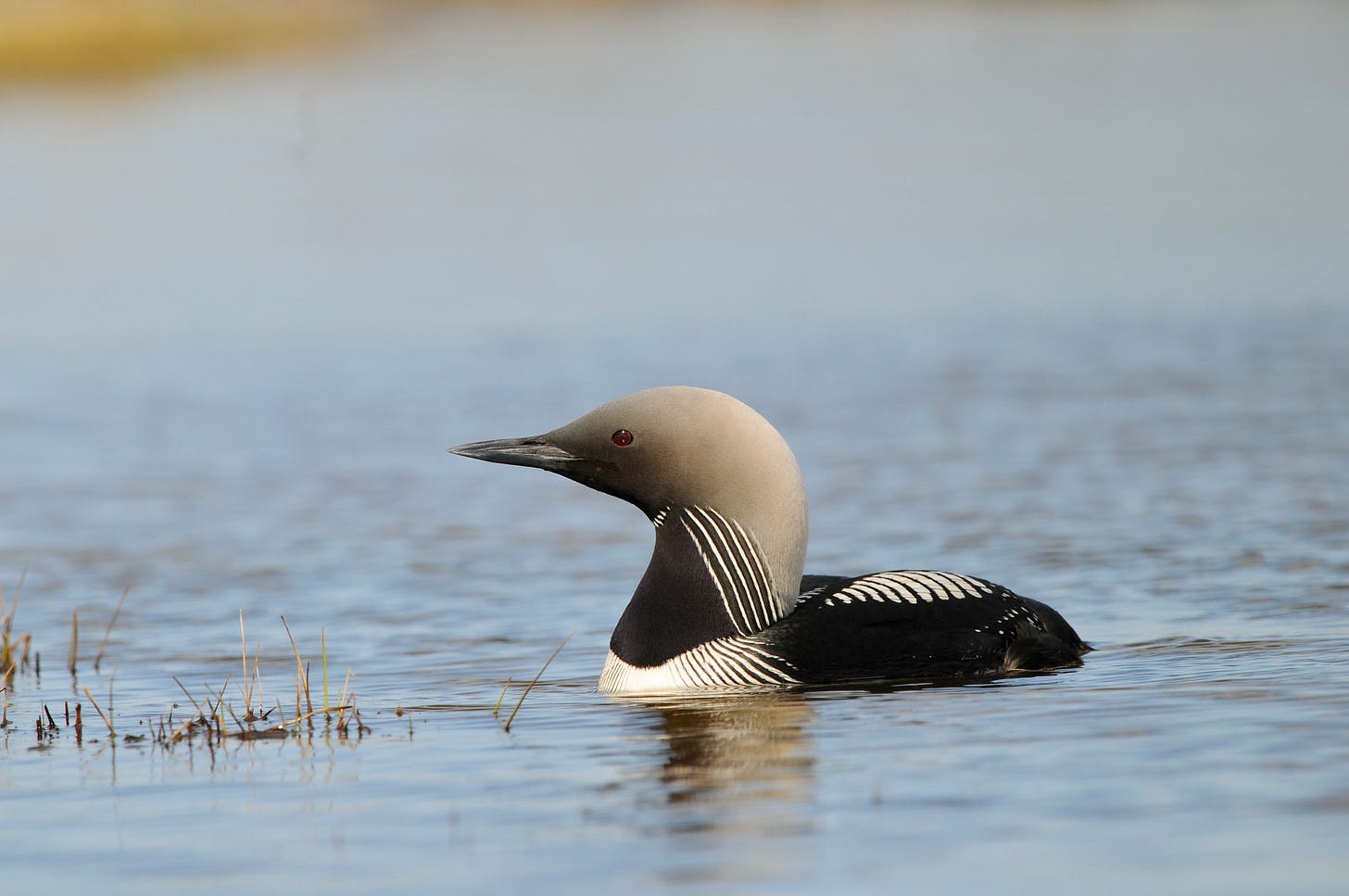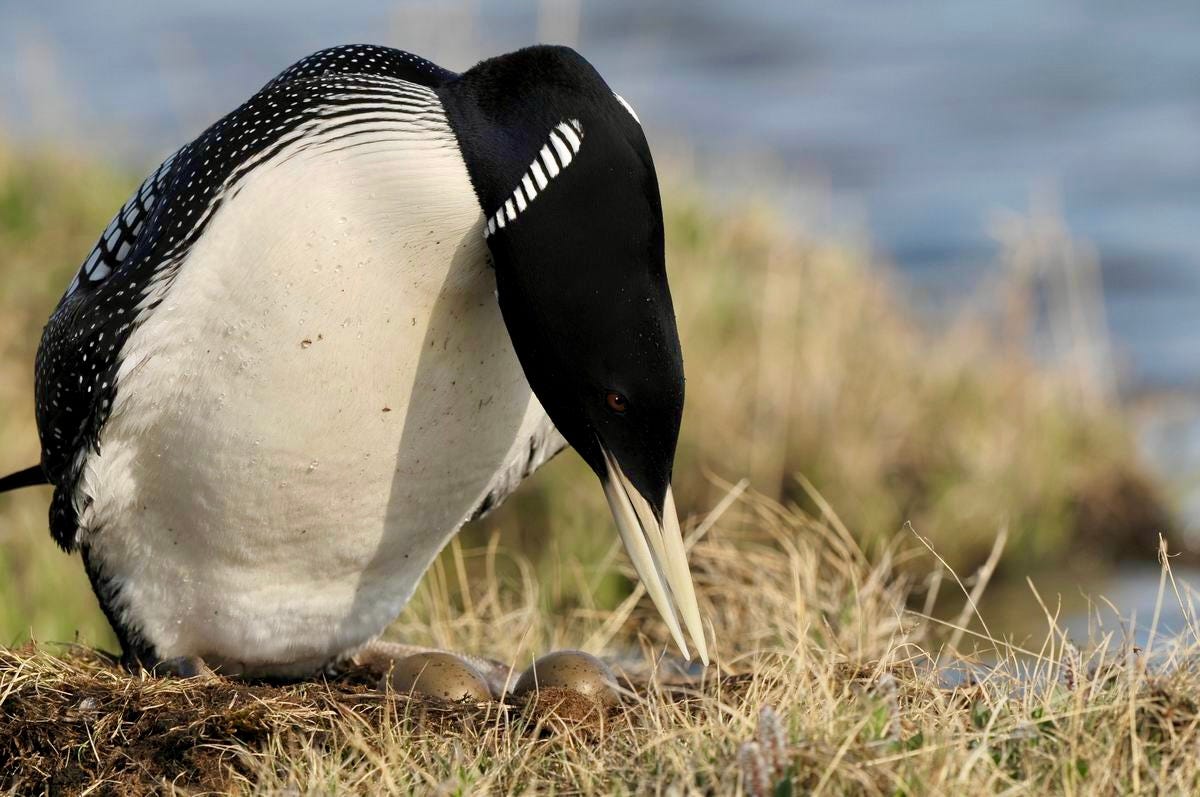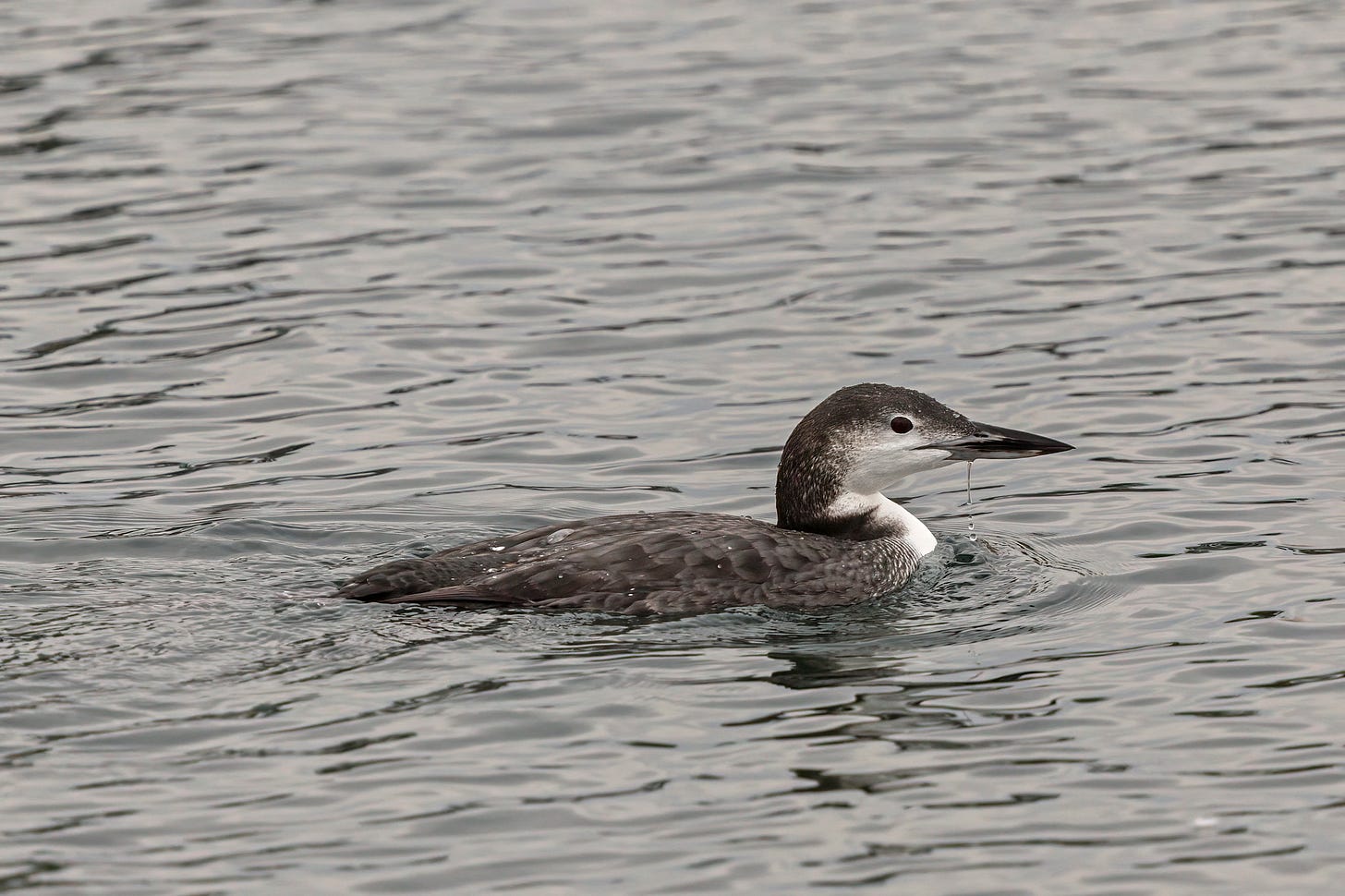“You should write about loons,” Dennis commented, out of the blue. He was sitting in his comfortable armchair, while I staggered past clutching a stack of dusty books. We were sorting our collection, forced into decluttering by the fact we’d run out of space in the beautiful pine floor-to-ceiling bookcases he’d built forty years ago, two smaller shelving units, and four wooden crates that serve as a windowsill, all in our living room. Mostly crammed, top to bottom, with treasured volumes about the natural world.
I sank onto the couch with a groan while he started to read me passages from a paperback he’d picked up, “Water and Marsh Birds of the World,” published in 1961 but still timely. Author Oliver Austin, Jr.’s words opening the “Loons” chapter had me captivated, as they had Dennis. “To those who know the northlands, the loons are living symbols of that wild, enchanting country. No one who has ever heard the loon’s music—the mournful far-carrying call-notes and the uninhibited, cacophonous, crazy laughter—ever forgets it.”
Ironically, I’d just peeked into a coffee table book of Robert Bateman’s wonderful artwork and read a snatch of text accompanying his evocative painting of seven loons floating in a slaty lake near a slab of granite: “Since my childhood summers at our cottage in Haliburton, the loon has come to symbolize, for me and many others, the magic of the north.”
Okay, it was a sign. Magic is always good, and I agreed with both authors. Writing about loons even at the end of October, when most, the adults anyhow, should by now be far away, swimming in salty seas, appealed to me. We hadn’t managed to get out on a canoe trip to spend time with them this summer, so it might help make up for that lack. Plus the information Dennis shared next was so interesting.
I didn’t know loons have solid, heavy bones, much different from the light, porous ones of almost all other avian species. They’re helpful for deep diving, “proved by one taken in a fisherman’s net set 240 feet below the surface,” Dennis read, though they usually hunt in shallower waters, snatching fish with their long, dagger-like bills. Another underwater asset is their ability to expel air from their lungs and squeeze it out of their plumage by flattening their feathers, resulting in lots less buoyancy when they dive. Or when they want to sink slowly and silently, without a ripple.
I knew how far back on their bodies loons’ feet are placed, and how awkward they are on land as a result, nesting practically at water’s edge for that reason. I had no idea that their legs “are encased within the body down to the ankle joint“—how strange is that?—so just their long webbed feet are exposed, propelling them through the water powered by those interior muscles. Their short wings help them balance and turn as they swim.
Loons do fly, of course, but need a long stretch of water for take-off. Once airborne they’re good to go, reaching speeds of 100 kph and sometimes flying hundreds of kilometers nonstop from lakes where they nest to ocean coasts where they overwinter. They molt all their wing feathers at once there, leaving them flightless for a time, but still able to dive for their dinner.
Juveniles linger on lakes where they were born after their parents have left, strengthening their flight muscles, so how they know where to migrate in turn is a wonder of nature. They’ll hang out in bays and coves of coastal waters for two years before heading north to freshwater lakes again.
I didn’t know loon fossil records stretched back more than 50 million years, or that the five species rimming the Arctic Ocean today likely evolved in recent ice ages. I remember finding four while canoeing the Coppermine River in the Northwest Territories some decades ago, but haven’t seen a yellow-billed loon since, the only one without a black beak. And I’ve never seen an arctic loon.
Some of our beloved common loons, which breed in northern North America, Iceland and Greenland, make it to coasts along the UK and Europe for the winter. They’re the ones that Brits so aptly call “great northern diver.”








